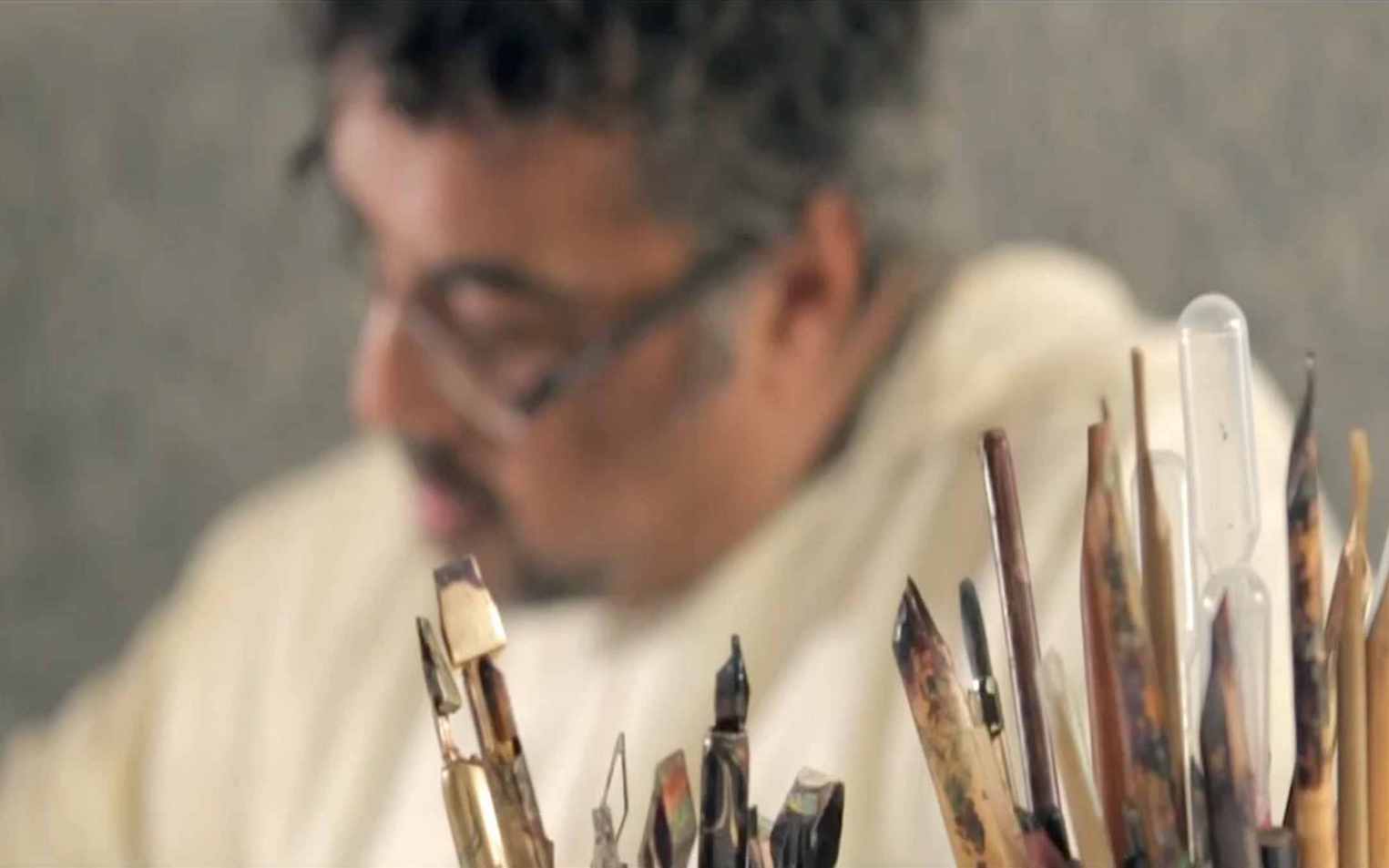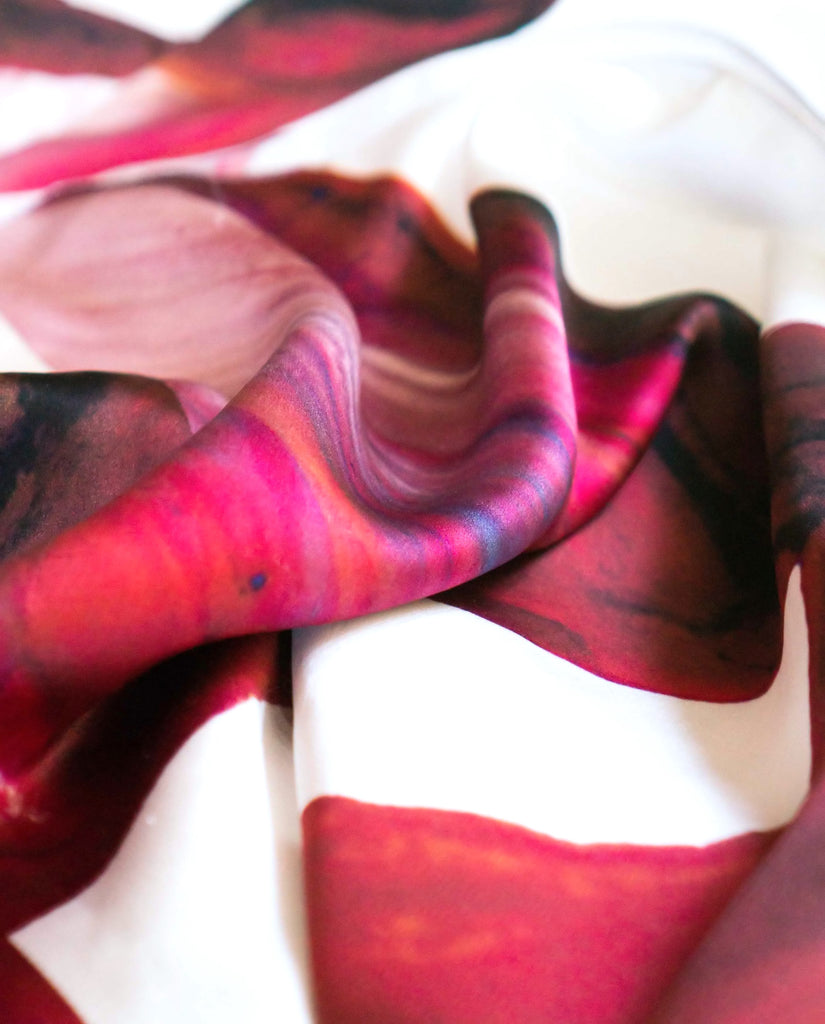Article: Calligraphy Artist Samir Malik

Calligraphy Artist Samir Malik
On most days, artist, calligrapher and photographer Samir Malik, can be found in his home studio in leafy West London, preparing a commission or tending to the seeds in his newly built greenhouse. The former osteopath made a radical change to his life in 2002 when he left his home in Germany to travel to Syria to study classical Arabic calligraphy at Damascus University.
While learning the traditional rules of calligraphy, Samir started to develop his own, contemporary and highly stylised version of the artform. Using paints rather than fine inks, and sweeping, unfinished strokes in multiple colours, Samir created a free form, abstracted and modern version of an ancient art form. This earned Samir both praise and criticism. His contemporaries pointed out that his 'Alifs' were not long enough and his 'Ba's' not wide enough.

Despite this, Samir's work started to earn global interest. Just after completing his studies in Damascus, Samir received a commission from the Sultana of Malaysia for a set of 99 calligraphies for her house. Encouraged by the Sultana, he felt a new freedom to pursue his vision and to continue in the journey that had started in Damascus.
Speaking about the spiritual aspect of his art, Samir says 'Through my study at the university and my own self-study, I realised that Islamic art is a metaphor for the Divine, so it has to work geometrically and aesthetically. The Divine Reality, according to Islam, is infinitely more beautiful than anything we can imagine, so I have always tried with my art to hint at that beauty beyond, which allows the heart and soul to instantly light up.'
'There is a school of thought that says true freedom comes from not having any boundaries. But I believe that freedom starts with learning from the masters, learning the rules and understanding where your own boundaries are, then having the choice to work within them or to choose your own path. If you choose to break the rules, then I believe you should do that with respect to the tradition. You have to be creative and not feel restricted by the past. You have to use the past as a foundation to work upon, but grow something new.'

The signature print for Nahara's first collection is Eternal Design. Samir talks about developing the Eternal Design print. 'I used only five different colours, but when they combined, they created multiple new colours. To show the individual colours without creating a muddy mess, was a big achievement for me and something I'm quite proud of. I have continued to use this technique. It relates to the earlier discussion about freedom. Sometimes you have to think outside the box or just throw the box away, to discover something completely new and beautiful.